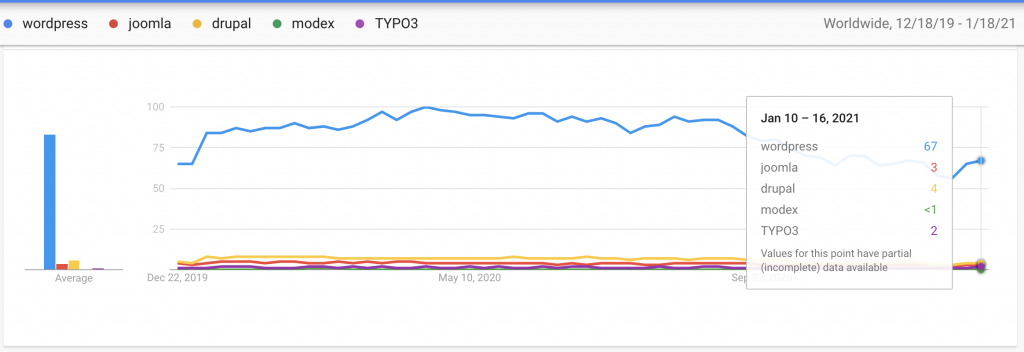Developing a website for an individual or for a business owner can be a lengthy and difficult process. Most importantly if you are not sure about where and how to start.
If you’re a business owner and you’re still “invisible” on the Internet, creating a website should always be part of your business strategy. Today, the Internet is an extremely useful tool for any and all business people, and online communication with potential users can significantly improve your business, but you’re not even aware of it.
Why do you need it for that? It doesn’t matter what the scope of your business is. It may be selling, providing services, or anything else. It is important that you’re there so that users can reach you whenever they need the service you provide.
Investing in a new website project is an important decision for most of us no matter whether we are running a smaller or larger business. Your website is the real picture of your business in the online and local community. It is the place where your potential users (customers) come to see who you’re and what you do as well as what your services are?
A new website can act as a sales, lead generating machine and turn your web traffic into measure conversion, only if you proper startup. However, if you miss the key points at the beginning of the journey then it could turn into worms. As it is a potentially never-ending cycle of tweaks and fixes chewed by time and resources.
Therefore, there are many business owners aware of the risks with website development projects. However, if you’ve had a high priority on what you want your website to do with your business/organization, things can work much more smoothly.
Today, things are changing and the possibility of an online business is something you can not ignore, so in this article, we’re going to discuss a few important things that you need to consider while developing a website:
Identifying Your Primary Users
This seems like a no-brainer, and you’d be amazed how many website projects have been completed without proper analysis of the user interest. In order to create a website that meets the needs of your most important target audiences, you must first look through who these people are and why they’re coming to your site. It’s not unusual for a single business to have multiple primary user groups.
It is important to keep in mind your target audience and their location. You must first look carefully thoroughly about who these people are and why they’re coming to your website. It is not good practice for a single business to have more than one target user group.
Be clear on your goal and target:
The goal can be anything from selling widgets online or offering different services. But it is important to keep members or users up-to-date.
Determine your budget
You can spend $120 to $10,000+ dollars on developing a website. Your objective is to help you decide on your budget. But your objective helps you decide how much you should invest in your website. As typically a website is an ongoing lifetime process, so you don’t have to worry if you can’t do what you want to do with it. You can do these things later but on startup, you should keep things clean and simple as your goal is to keep your users up-to-date.
Improving Your Visual Brand
Is the color scheme of your branding drab or dated? Do you also have a manual on visual branding guidelines? All these are things that need to be considered when investing in creating a website. The simpler, more consistent, and more modern your branding, the much more visually enticing your website will be.
That is why it is crucial to remember that the Website development team or service you hire will probably not be responsible for your brand reputation. It is all up to you to come back to the table with your company’s mission, goals, objectives, and services.
Here are some user-friendly tips you may follow:
Place your logo on the homepage. You should keep your logo on the homepage: It is good practice to place your logo on the homepage. It is expected by your visitors to save valuable clicks while navigating through the website. If you don’t have it yet, then this practice is highly recommended.
Focus on your Website Menu. Your website menu should be visible and easy to find, whether you opt for a classical horizontal menu, hamburger menu, or anything else.
Try any vertical navigation. Use an anchor menu if your site is of the long-scrolling option, such as a one-page website. Visitors would be able to move to any part of the web easily with one click. The ‘Back to Top’ icon, which takes visitors to the top of the page wherever they are on your web, is another choice to consider.
Focus on your footer. Your footer is probably the last thing on your website to see, and it’s a good idea to put all your relevant links on it. This may include your contact information, social media icons and a shortened version of your menu, or any other related links that may be requested by visitors.
Choosing the Right CMS
If you are already running a website, you may be comfortable using the CMS. Or, instead, you might be disappointed with the CMS you’ve been using, so you’re ready to try something different. No doubt, WordPress is the most popular and widely used CMS worldwide due to its easiness and 100% customizable interface.
But every company has specific issues that need to be overcome, and ultimately the right CMS for your business might not be the best option for anyone else.

Making Mobile Responsive Website Should be a Top Priority
In the past, no company was focused on responsive websites such as mobile-friendly interfaces. So in 2020, we see that there are 55% of web traffic coming from mobile devices, skipping responsiveness is one of the safest ways to hinder the success of your platform.
Therefore if you want to make your site design responsive like how everything fits on different devices such as mobiles, tabs, and laptops then you must create a responsive website.
Hire a Website Development Company You Comfortable Working With
Do you feel that the hired company can understand your vision? Does their team have useful ideas and solutions that you’ve not thought about? Have you looked at their past work? Do you believe you’re going to get a professional service? Is the price for your budget right? What is included in the fee that you pay? These questions should be asked by yourself.
If you have a business website, develop a strategy on how you will market it:
Having a website without visitors is likely to get you nowhere. An example is writing a fantastic book, hiding it in the library, not telling anyone about it. You’re going to have to really push traffic to your site. There seem to be a variety of ways to do this. You could either learn to do this yourself and hire a SEO professional to help. While hiring someone will increase your initial costs, it will pay off in the long term if you have further potential clients visiting your site and eventually increase your sales.
Including calls to action:
Nothing prevents the functionality of a website, including such forgetting to add a call-to-action (CTA) to every page. So what is the CTA? It’s a statement or question that motivates the website visitors to do something about it.
For example, the statement, “Follow us on Facebook and learn how to make money with useful tips! “At the conclusion of the blog post, users are advised to take action by following up on your social media business.
Add Contact info:
We all know that contact information is the most important factor for any business as it increases your brand trust. It’s that they’ve got to have a special section. Every visitor is most disappointed when they can’t find contact information about it. Information, such as phone number, mail, address, contact type, must be readily visible and accessible.
When you post this information, it is not recommended that it be in the image, but that it should be written as a text because then users can copy it as needed.
Choose a domain name and find a hosting company:
Your website would also need to be located somewhere so that anyone can access it. And you might want to register a domain name, such as www.abc business.com. Doing so, instead of using the long, awkward name (and free webspace) provided by your Internet Service Provider (ISP), sounds a lot more formal and is much easier for customers to remember. Choosing a successful domain name will also help you find it in search engines, such as Google. You will also get similar email addresses, such as info@abcbusiness.com, which again sound professional and reinforce your domain name.
Add social proof:
Social media is a key aspect of online marketing. By integrating social proof into your website content, you can enhance your brand loyalty and give your visitors additional reasons to support your company.
Conclusion
Small businesses from all sectors can increase their chances of a successful website project by keeping these tips in mind, ensuring their needs are met and the overall design supports their business goals.
It’s not a one-and-done deal for launching a website & its design. There was the question of fixing bugs or updating the design. Consider your level of skill and the time you can spare to take care of back-end problems.
Is it something you can do yourself to solve problems or do you need to pay someone else to do it? A very simple content management system and 24-hour customer support are provided by some website builders, making it the most user-friendly option



